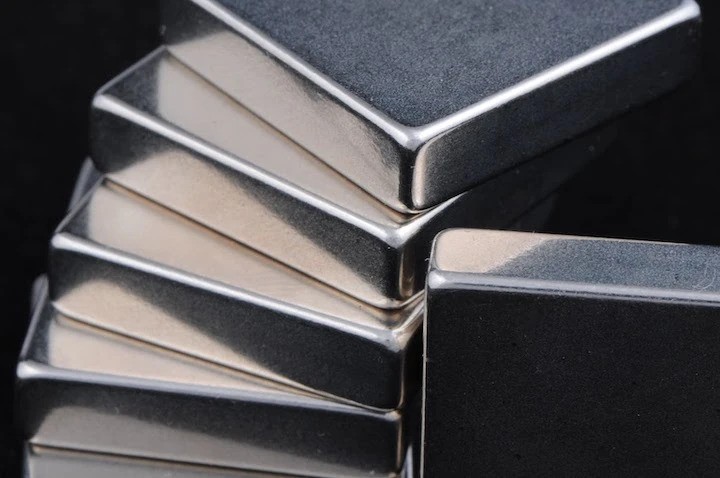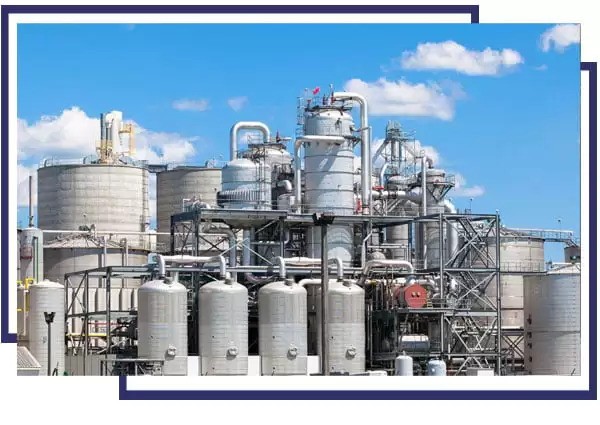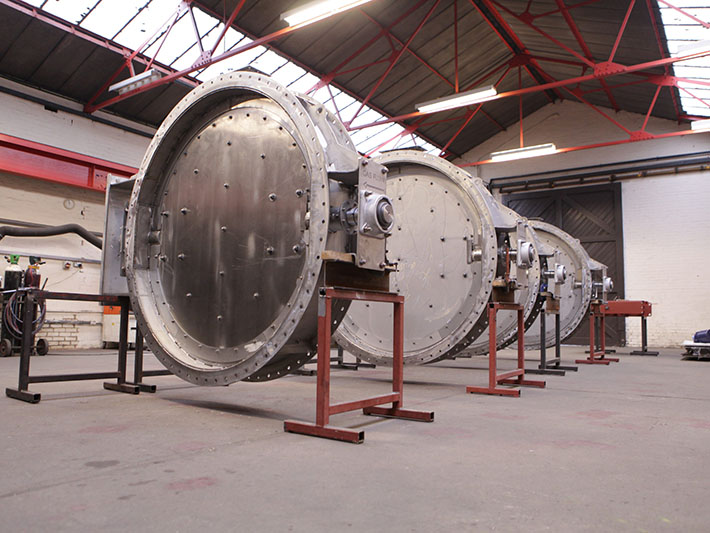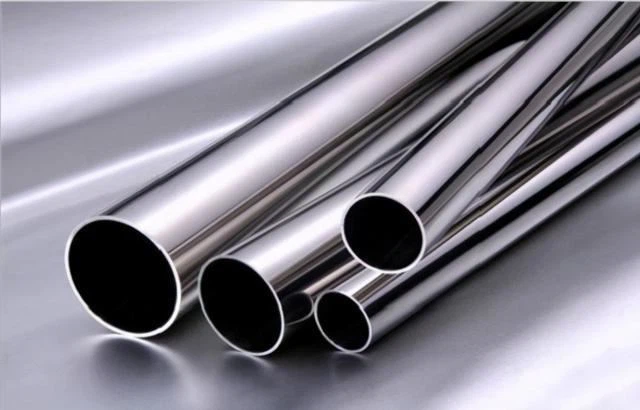





Phone
+86-731-82250427
Address
25th floor, C3 Building, Wanda Plaza, Kaifu District, Changsha, Hunan Province, China.
 May 24 2023
May 24 2023The welding characteristics of austenitic stainless steel: The elastic and plastic stress and strain during the welding process are very large, but cold cracks are rarely seen. There is no quenching hardening zone and grain coarsening in the welded joint, so the tensile strength of the weld is relatively high.
The main problems of austenitic stainless steel welding: large welding deformation; due to its grain boundary characteristics and sensitivity to certain trace impurities (S, P), it is easy to produce hot cracks.

Intergranular corrosion: According to the theory of chromium depletion, chromium carbide precipitates on the grain boundaries when the weld and heat-affected zone are heated to the sensitization temperature zone of 450-850℃, resulting in chromium-depleted grain boundaries, which are insufficient to resist corrosion.
(1) The following measures can be used to limit the corrosion between the weld seam and the corrosion in the sensitizing temperature zone on the target material:
a. Reduce the carbon content of the base metal and welds, add stabilizing elements Ti, Nb and other elements to the base metal to give priority to the formation of MC to avoid the formation of Cr23C6.
b. Make the weld form a dual-phase structure of austenite and a small amount of ferrite. When there is a certain amount of ferrite in the weld, the grains can be refined, the grain area can be increased, and the precipitation of chromium carbide per unit area of the grain boundary can be reduced.
Chromium is highly soluble in ferrite. Cr23C6 is preferentially formed in ferrite without causing austenite grain boundaries to be depleted in chromium; ferrite spreading between the austenites can prevent corrosion along the grain boundary to the inside diffusion.
c. Control the residence time in the sensitization temperature range. Adjust the welding thermal cycle, shorten the residence time of 600~1000℃ as much as possible, and choose a welding method with high energy density (such as plasma argon arc welding),
Use a smaller welding heat input, pass argon gas on the back of the weld or use a copper pad to increase the cooling rate of the welded joint, reduce the number of arc starting and closing to avoid repeated heating, and the contact surface with corrosive medium in multi-layer welding is as last as possible Welding etc.
d. After welding, carry out solution treatment or stabilization annealing (850~900℃) and air cooling to make the carbides charge out and accelerate the diffusion of chromium).
(2) Knife-shaped corrosion of welded joints. For this reason, the following preventive measures can be taken:
Due to the strong diffusion ability of carbon, it will segregate in the grain boundary to form a supersaturated state during the cooling process, while Ti and Nb remain in the crystal due to low diffusion ability. When the welded joint is heated again in the sensitization temperature range, supersaturated carbon will precipitate in the form of Cr23C6 between the crystals.
a. Reduce carbon content. For stainless steel containing stabilizing elements, the carbon content should not exceed 0.06%.
b. Use a reasonable welding process. Choose a smaller welding heat input to reduce the residence time of the overheated zone at high temperature, and pay attention to avoiding the "medium temperature sensitization" effect during the welding process.
When double-sided welding, the weld in contact with the corrosive medium should be welded last (this is the reason why the internal welding of large-diameter thick-wall welded pipes are carried out after the external welding). If it cannot be implemented, the welding specification and weld shape should be adjusted, and try to avoid The overheated area in contact with the corrosive medium is again sensitized and heated.
c. Post-weld heat treatment. Carry out solution or stabilization treatment after welding.
02. Stress corrosion cracking
The following measures can be used to prevent the occurrence of stress corrosion cracking:
a. Correctly select materials and reasonably adjust the weld composition. High-purity chromium-nickel austenitic stainless steel, high-silicon chromium-nickel austenitic stainless steel, ferritic-austenitic stainless steel, high-chromium ferritic stainless steel, etc. have good stress corrosion resistance, and the weld metal is austenitic It has good stress corrosion resistance in the structure of the dual-phase steel of stenite and ferrite.
b. Eliminate or reduce residual stress. Perform post-weld stress relief heat treatment, and use mechanical methods such as polishing, shot peening, and hammering to reduce surface residual stress.
c. Reasonable structure design. To avoid large stress concentration.
The sensitivity of thermal cracking mainly depends on the chemical composition, organization and performance of the material. Ni is easy to form low melting point compounds or eutectic with impurities such as S and P. The segregation of boron and silicon will promote thermal cracking.
The weld seam is easy to form a coarse columnar crystal structure with strong directionality, which is conducive to the segregation of harmful impurities and elements. This promotes the formation of a continuous intergranular liquid film and improves the sensitivity of thermal cracking. If the welding is not uniformly heated, it is easy to form a larger tensile stress and promote the generation of welding hot cracks.
Preventive measures:
a. Strictly control the content of harmful impurities S and P.
b. Adjust the organization of the weld metal. The dual-phase structure weld has good crack resistance. The delta phase in the weld can refine the grains, eliminate the directionality of single-phase austenite, reduce the segregation of harmful impurities at the grain boundary, and the delta phase can dissolve more S, P, and can reduce the interface energy, organize the formation of intergranular liquid film.
c. Adjust the weld metal alloy composition. Appropriately increase the content of Mn, C, and N in single-phase austenitic steel, and add a small amount of trace elements such as cerium, pickaxe, and tantalum (which can refine the weld structure and purify the grain boundary), which can reduce the sensitivity of thermal cracking.
d. Process measures. Minimize the overheating of the molten pool to prevent the formation of thick columnar crystals. Use small heat input and small cross-section weld beads.
For example, 25-20 type austenitic steel is prone to liquefaction cracks. It is possible to strictly limit the impurity content and grain size of the base metal, adopt high-energy density welding methods, small heat input and increase the cooling rate of the joints.
04. Embrittlement of welded joints
Hot-strength steel should ensure the plasticity of welded joints to prevent high-temperature embrittlement; low-temperature steels are required to have good low-temperature toughness to prevent low-temperature brittle fracture of welded joints.
Due to low thermal conductivity and large expansion coefficient, welding deformation is large, and clamps can be used to prevent deformation. The welding method of austenitic stainless steel and the selection of welding materials:
Austenitic stainless steel can be welded by argon tungsten arc welding (TIG), molten argon arc welding (MIG), plasma argon arc welding (PAW) and submerged arc welding (SAW).
Austenitic stainless steel has a low welding current because of its low melting point, low thermal conductivity, and high electrical resistivity. Narrow welds and beads should be used to reduce high temperature residence time, prevent carbide precipitation, reduce weld shrinkage stress, and reduce thermal crack sensitivity.
The composition of welding materials, especially Cr and Ni alloying elements, is higher than that of base materials. Use welding materials containing a small amount (4-12%) of ferrite to ensure good crack resistance (cold cracking, hot cracking, stress corrosion cracking) performance of the weld.
When the ferrite phase is not allowed or impossible in the weld, the welding material should be the welding material containing Mo, Mn and other alloy elements.
The C, S, P, Si, and Nb in the welding material should be as low as possible. Nb will cause solidification cracks in the pure austenitic weld, but a small amount of ferrite in the weld can be effectively avoided.
For welding structures that need to be stabilized or stress-relieved after welding, Nb-containing welding materials are usually used. Submerged arc welding is used to weld the middle plate, and the burning loss of Cr and Ni can be supplemented by the transition of the flux and the alloy elements in the welding wire;
Due to the large penetration depth, attention should be paid to prevent the generation of hot cracks in the center of the weld and the reduction of corrosion resistance in the heat-affected zone. Attention should be paid to choosing a thinner welding wire and a smaller welding heat input. The welding wire needs to be low in Si, S, and P.
The ferrite content in the heat-resistant stainless steel weld should not exceed 5%. For austenitic stainless steel with Cr and Ni content greater than 20%, high Mn (6-8%) welding wire should be used, and alkaline or neutral flux should be used as the flux to prevent the addition of Si to the weld and improve its crack resistance.
The special flux for austenitic stainless steel has very little increase of Si, which can transfer alloy to the weld and compensate the burning loss of alloy elements to meet the requirements of weld performance and chemical composition.
